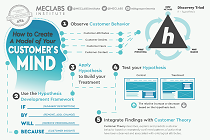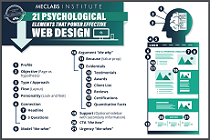August 18, 2003
Case Study
|
SUMMARY:
If you are frustrated by your clients or bosses' inability to truly integrate online and offline advertising, check out this Case Study for useful pointers (and maybe forward it to a few people). Our favorite part: Reasons why media buys should be different for online versus offline. Integrating media buying is more complex than we ever guessed.
|
|
CHALLENGE
British Airways (BA) has a fabulous selling point
versus other airlines. Its business-class seats for some
flights open up horizontally to be as flat as possible so
travelers can sleep more comfortably.
Unfortunately, as BA's Marketing Services Manager for North
America Amy O'Kane explains, "Our research showed that consumers
didn't really get the concept of the flat bed."
It was a huge chance for BA's online branding ads to finally come
into their own.
Ads in other media are necessarily limited by space or time. Once you get a consumer's attention online, you can give them a
chance to access an unlimited amount of information. You can turn
a basic branding message into a deeper educational one.
BA's marketing team wanted to do more than just repurpose
their offline creative for banners. They wanted to create an
online branding campaign as a complimentary sibling to their
traditional media presence.
Easier said than done. BA had not one, not two, but three
different ad agencies (M&C Saatchi, Optimedia, and iTraffic) who
would all need to be involved.
How do you create a seamless online/offline campaign relatively
painlessly?
CAMPAIGN
O'Kane started with the hardest step of all: Getting
all three agencies and their BA managers to work together as a
true team.
In order to launch the campaign scheduled for January-March 2003,
code-named "Blue Bed Campaign," first everyone met in person to
nail down campaign objectives, budgets and target start dates,
and to brainstorm creative ideas.
The agencies went back to their separate offices and brainstormed
some more to flesh out the campaign details. Then several days
later, everyone met in person again to agree on the overall plan
and finalize strategy.
From then on, weekly meetings, held either in person or by phone,
focused on production rather than strategy. O'Kane gives an
example, "This is where we are on a project, we have a photo
shoot on Friday, we're planning a tour of facilities, we have to
get creative to this agency on this day…"
O'Kane notes that it was tough sticking to the weekly meeting
schedule. "We try to protect that time. If we don't, things end
up being disjointed."
-> Really integrating online and offline creative
Everyone wanted to do more than simply lift offline creative
elements and plug them into online media. Creative directors
at both agencies worked together on complimentary concepts.
For example a typical print ad had a white background with an
image of the light-blue flat bed. All you see is the back of the
seat, and a paid of legs stretched out, feet crossed, covered by
a blanket.
The headline reads, "Flat bedzzzzzzzz." Subhead read, "The truly
flat bed in business class for a better sleep to London."
A typical online ad would be a simple white banner reading "Flat
bedzzzzzz." The "zs" floated sleepily about. After a few
seconds, the banner expands to take up most of the viewer's
screen, showing the flat-bed in the reclined position.
However, unlike the print ad, the blow-up banner is interactive.
As viewers scrolled over each of three boxes, "Work, Relax and
Sleep," they would see a line drawing of the seat in each of these
positions.
O'Kane loved this high-impact online creative, but worried a bit
that the ad would annoy Net users whose surfing was interrupted
by its appearance.
-> Integrating media buying (less than you might think)
"You don't always need the matching shoes and handbag approach,"
notes O'Kane about integrating online and offline media buys.
The online and offline media buyers wanted to appeal to the exact
same target demographic who were most likely to purchase BA
business class tickets. However, this did not mean media buyers
chose the exact same media all the time.
That is because often the various versions of brands such as The
Economist or CBS MarketWatch do not have as much of an overlapping
audience as you might think. A different demographic may read
online vs offline.
Also, the media buyers agreed they wanted to hit the same
demographic with the same message repeatedly wherever that target
might be throughout a day. A message followed that eyeball
online and offline until it sank in.
For example, O'Kane describes a series of media buys targeting
New Yorkers, "Someone wakes up, they see MSNBC and our ad; they
see us on MetroNorth; they see us on coffee mugs at local delis
in the financial district; they get to work and see us on Yahoo
finance; they read their paper and see us."
While BA's media buyers definitely took integrated ad buy
savings into consideration when making their plans, it was not the
only consideration. Their buys were complimentary, but not
necessarily identical.
RESULTS
According to a Dynamic Logic study, awareness of BA's flat bed seats increased 242% overall among the target
demographic online during the campaign from January to March
2003.
Far from annoying people, the more intrusive ad units were
praised by both customers and the press. These units also
performed up to four times better in terms of creating awareness
than other online units did.
BA flat bed seats did experience a 15% downward blip in brand
awareness during the heavy war news days in March. However, the "day in the life" media buy following New Yorkers around all day, helped bring awareness surging back up again.
O'Kane says that due to positive results like these, BA's brand
advertising team now give 5-15% of each campaign budget to
online. (In addition, BA's direct response team spend as much as 35% of their budget online.)
The in-person team pre-planning meeting and weekly status
meetings have made O'Kane's job much easier than before. She
says, "We've had a lot less 'oh shit' situations [of] 'who's
doing that?!' Now everyone stays in tune with what's going on. It's reassuring for us. There's more visibility of what might and might not fall through."
She also notes that due to the combined teams' success, BA is now investing in new metrics software and services to track cross-media ad impact.
Link to sample of BA's offline and online ads:
http://marketingsherpa.com/ba/ad.html









